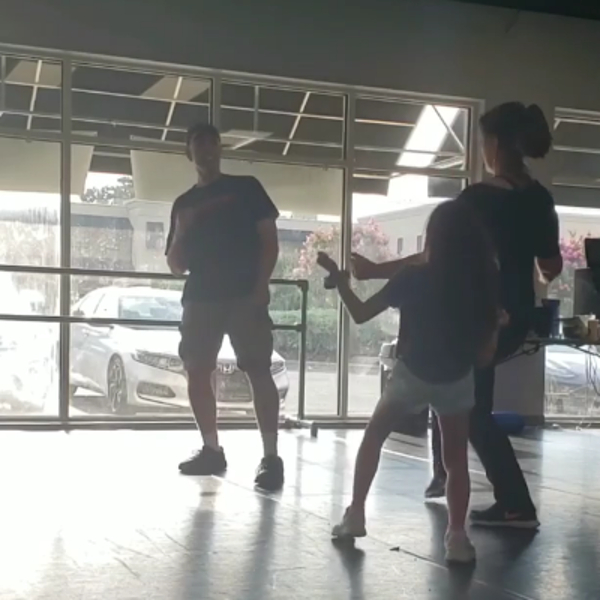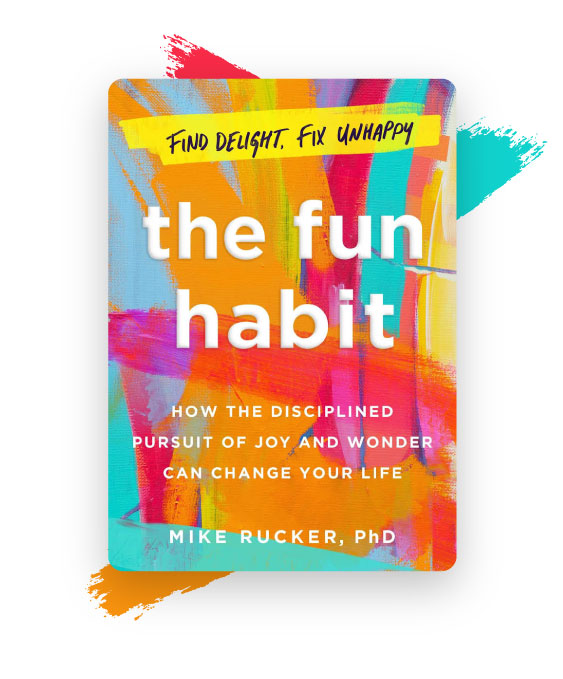One of the consequences of our self-sacrificing hustle culture is that it often crowds out time for other worthy activities. Over the past few years, it has become abundantly clear this modus operandi is terrible for our well-being. It excites me to see that more and more of us are getting wise to the reality that we need to reintegrate fun and play in our lives to stay healthy.
It’s not just a matter of vitality. A rich body of emerging research supports what you probably already intuitively know—fun and play support our social, emotional, and mental well-being. What’s yet to be widely discussed is our power of agency for choosing what we do for fun and play. This power is more important than you may realize.
Research demonstrates it’s not just the frequency of our play that matters, but how into the things we’re doing as well. The level of our enjoyment in any given activity is directly related to the way we engage with activity. Think about a time you actually took a day to do your favorite things—didn’t life just feel better that day, and likely after as well?
Here are three things to consider regarding play, whether you’re using the PLAY model or just trying to have a bit more fun.
I. Pick the Right Game
When something’s not fun, often it’s because we haven’t found the right game or we’ve relinquished our autonomy in a way that has us playing a game we’re either no good at, don’t enjoy, or both. Paul Adachi and Teena Willoughby from Brock University in Canada studied the relationship between engagement in sports and self-esteem by following a sample of 1,492 adolescents over four years. One conclusion of their research suggests that a successful way to get someone more engaged in play is to nudge them towards less-competitive activities.
This advice isn’t simply a ploy to make someone’s life easier. It is a mastery tactic affording someone who is not motivated by competition to still have opportunities to skill build, enjoy prosocial behavior, and actually have some fun instead of being forced into an activity that’s overtly focused on performance.
This is an especially helpful technique for those with low self-esteem. Those with low self-esteem may already be hesitant to pursue competitive activities due to the fear and anxiety associated with judgment and pressure (e.g., performing for coaches, judgmental team members, spectators, etc.). Think about it; how many people do you know who truly love being in the hot seat at the start of learning anything? Masochists exist, so I’m sure they’re out there, but these people are in the minority.
What challenges, games, and sports do you consider less competitive?
If you Google this question, you will likely be met with a list of self-governed activities like golf, rock climbing, dancing, knitting, reading, and so on. But we are not talking about just activities you can do by yourself. You have more autonomy to figure out where you can be competitive that you probably give yourself credit. There is a playground for almost any type of skilled fun, from hot dog eating contests to The Mannequin Challenge. It’s up to you to find your jam.
The “right game” should be dictated by your level of interest, the environment’s appeal (to you), and the opportunity for mastery. The YMCA’s club volleyball league is an opportunity for play, playing Settlers of Catan is an opportunity for play, as is learning the latest Disney dance routine with your daughter.
If you’re not having fun, remember you get to pick the game. Try out another one until it’s fun.
II. Pick the Right Play(ers)
Sometimes it’s the right game, but the wrong players. In their research, Adachi and Willoughby concluded that the enjoyment derived from an activity might be more important than the frequency of participation. In other words, finding and participating in activities you find most pleasurable on a consistent, tolerable basis is likely an optimal way to maximize the value of your leisure time.
Playing is not just about the activity or game itself. It’s about discovering the attributes that make it uniquely suited for you—the how, when, and maybe most importantly, the who. If you are not enjoying what you’re doing, take stock (and take charge) of the elements surrounding it. Are you not deriving joy from the game you thought you would love? It could be the playground. Try switching things up by joining another league or trying another method.
When I began experimenting with cycling as a way to have fun, my first attempt was to join a local cycling club. For a variety of reasons, it wasn’t much fun at all. Now, you can’t get me off my Peloton because I ride safely to loud heavy metal or hip hop and only compete against myself. What elements can you play with to have more fun? Are the other players kind of jerks? It’s generally easier to find new players than you think. We are often more in control of a given situation than we give ourselves credit.
III. Enjoy Playing the Game
If you are still answering emails on your phone during time meant for play, then the time is likely not really leisure, the time is almost certainly not restorative … you’ve basically turned your potential good time into an extension of your work hours. To maximize play’s value, the activity should be engaging enough that you don’t want to think about anything else. I’m not saying the activity needs to lead to flow (although flow can certainly be an amazing benefit of play), but you should at least be engaged enough that you don’t want your attention elsewhere.
Matt Killingsworth conducted a study using his app, Track Your Happiness, to collect intermittent data about mood from individuals throughout the day. The app had question prompts related to what you were doing in any given moment, with one question specifically related to whether your mind was present or wandering during a given activity. As of 2013, an impressive 650,000 reports from over 15,000 participants had been collected. The findings from the data thus far indicate “a strong relationship between mind-wandering now and being unhappy a short time later, consistent with the idea that mind-wandering is causing people to be unhappy.” In short, to maximize the value of play, we should be engaged enough that the activity draws us into the present moment.
With digital interruptions and the pressures of life coming from all sides, it’s easy to be distracted nowadays. It is also why it’s so important to be deliberate about how we play. Want to reap the benefits of joy and enjoyment while doing what you love, when, how, and with who you love it? The best advice I can give is to do what it takes to be present.
Bonus: Tip for Parents
According to a study by David R. Shaffer and Erin Wittes of the University of Georgia, there is evidence that people who are encouraged to participate in activities at an early age see long-term benefits, such as higher self-esteem. If you have young children, it’s likely a good idea to give them the nudge to try new things, help them explore why they enjoy certain activities, and give them the space to discover where they feel they thrive. Even if your kids aren’t young anymore, all of these principles apply to older children and, of course, yourself as well. So go out there, find the right game, and start playing!
Sources and Further Reading:
Adachi, P. C., & Willoughby, T. (2014). It’s Not How Much You Play, but How Much You Enjoy the Game: The Longitudinal Associations Between Adolescents’ Self-Esteem and the Frequency Versus Enjoyment of Involvement in Sports. Journal of Youth and Adolescence, (1), 137. doi:10.1007/s10964-013-9988-3
Killingsworth, M. (2013, July 16). Does Mind-Wandering Make You Unhappy? Greater Good Magazine. Retrieved from https://greatergood.berkeley.edu/article/item/does_mind_wandering_make_you_unhappy.
Shaffer, D. R., & Wittes, E. (2006). Women’s precollege sports participation, enjoyment of sports, and self-esteem. Sex Roles: A Journal of Research, 225.

